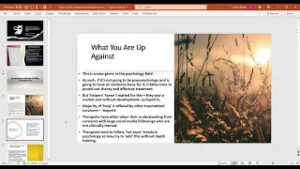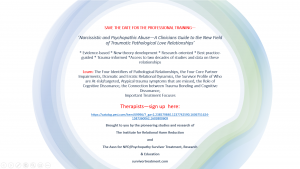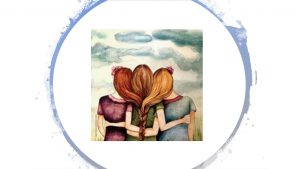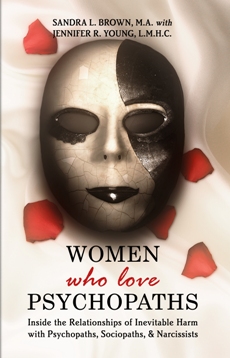Hope you’re having a good Valentines Day! And since Valentine’s Day is upon us, I thought it would be a great discussion about what happens in Pathological Love Relationships— that attraction is on over-drive while love (from a pathological) is lingo-bling.
But what about real love, healthy love? People write all the time and say ‘When are you going to write How to Spot a Healthy Partner because with as many bad relationships that I’ve been in, I can hardly tell the difference between what should be obviously toxic and what should be obviously healthy.’
The opposite of healthy love is what we often call ‘toxic’ love. Sometimes understanding what toxic ‘looks like’ helps us to see what real ‘love’ should look like too.
Here is a short list of the characteristics of Love vs. Toxic Love (compiled with the help of the work of Melody Beattie & Terence Gorski).
1. Love – Development of self first priority. Toxic love – Obsession with relationship.
2. Love – Room to grow, expand; desire for other to grow. Toxic love – Security, comfort in sameness; intensity of need seen as proof of love (may really be fear, insecurity, loneliness).
3. Love – Separate interests; other friends; maintain other meaningful relationships. Toxic love – Total involvement; limited social life; neglect old friends, interests.
4. Love – Encouragement of each other’s expanding; secure in own worth. Toxic love – Preoccupation with other’s behavior; fear of other changing.
5. Love – Appropriate Trust (i.e. trusting partner to behave according to fundamental nature.) Toxic love – Jealousy; possessiveness; fear of competition; protects “supply.”
6. Love – Compromise, negotiation or taking turns at leading. Problem solving together. Toxic love – Power plays for control; blaming; passive or aggressive manipulation.
7. Love – Embracing of each other’s individuality. Toxic love – Trying to change other to own image.
8. Love – Relationship deals with all aspects of reality. Toxic love – Relationship is based on delusion and avoidance of the unpleasant.
9. Love – Self-care by both partners; emotional state not dependent on other’s mood. Toxic love – Expectation that one partner will fix and rescue the other.
10. Love – Loving detachment (healthy concern about partner, while letting go.) Toxic love – Fusion (being obsessed with each other’s problems and feelings).
11. Love – Sex is free choice growing out of caring & friendship. Toxic love – Pressure around sex due to insecurity, fear & need for immediate gratification.
12. Love – Ability to enjoy being alone. Toxic love – Unable to endure separation; clinging.
13. Love – Cycle of comfort and contentment. Toxic love – Cycle of pain and despair.
~ ~ ~ ~ ~ ~ ~ ~ ~ ~ ~ ~ ~ ~ ~ ~ ~ ~ ~ ~ ~ ~
Love is not supposed to be painful. There is pain involved in any relationship but if it is painful most of the time then you are probably in a Pathological Love Relationship because the end result of these relationships is ‘Inevitable Harm.’ Let’s be clear that there is nothing wrong with wanting a relationship – it is natural and healthy. If we can start seeing relationships not as the goal but as opportunities for growth then we can start having more functional relationships. A relationship that ends is not a failure or a punishment – it is a lesson. And these lessons are mostly about pathology, its permanence, and the lives it affects without discrimination.






